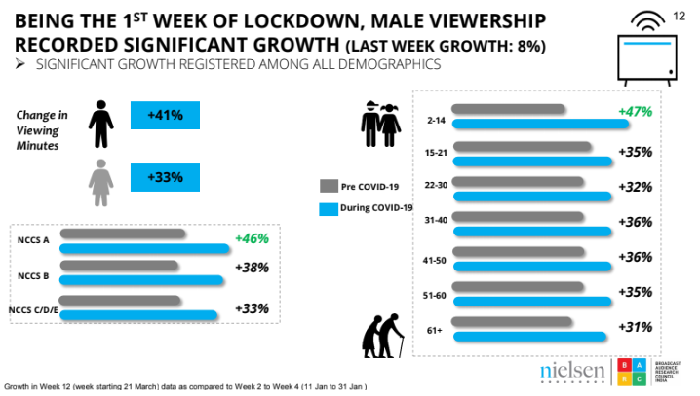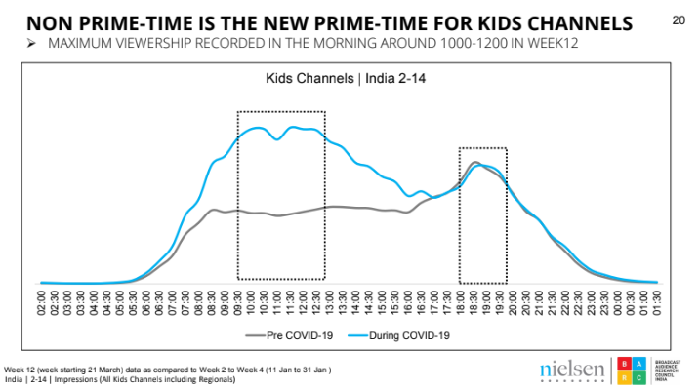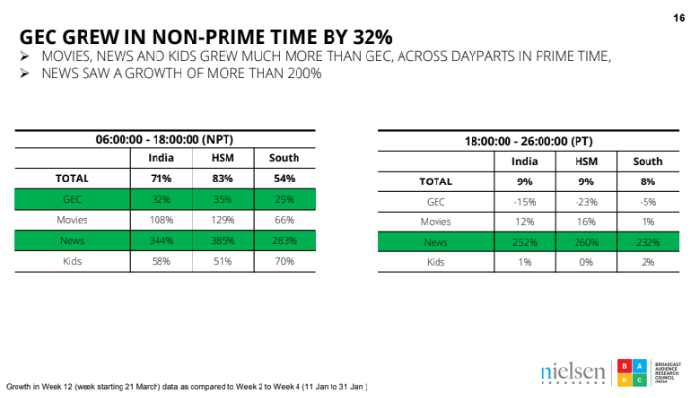The COVID-19 lockdown may have hit life hard across the globe, but it has boosted media consumption patterns worldwide.

After launching a special report, COVID-19 IMPACT: WHAT’S HAPPENING IN THE TV & SMARTPHONE LANDSCAPE on 27 March, BARC (Broadcast Audience Research Council) India and Nielsen released another report, CRISIS CONSUMPTION: AN INSIGHTS SERIES INTO TV, SMARTPHONE & AUDIENCES (second of the same edition) on 2 April, to track the changes in consumption behaviours of TV and Smartphones in the last week, given the continuation of lockdown.
In the week two of COVID disruption, total TV consumption increased by 37 per cent with growth across all parameters of viewing. The current week garnered the highest ever total TV consumption at 1.20 trillion.

Kids sector retained its prominent position in the top four most viewed sectors – News, GEC, Movies and Kids. During the first week of (14 to 20 March) lockdown, there was a significant growth in viewership in the kids category (two to 14 years) by 47 per cent.
Non Prime time has become the new ‘prime time’ for kids channels during this imposed quarantined period, with maximum viewership recorded in the morning between 10 am to 12 noon.
Digital news publisher, BISBO (from the GoBisbo Broadcasting Network) also stressed on these insights as some of the emerging trends of consumption during the lockdown period. BISBO, India’s first YouTube channel for animated news explainers and commentary, keenly follows and expounds on the latest trends in news and media consumption.

Commenting on the latest report, Bisbo founder and creator Shakir Ebrahim said, “Right now, the Indian audience covets credible news, even children between two to 14 years of age. Age-wise, children between two to 14 years and teens between 15 to 21 years are the ones who are watching the most television. And what they watch is chiefly in Hindi – Hindi content consumption is the highest, rising in this time by an overall 8 per cent, followed by Malayalam and Tamil content. The number of children who are sitting in front of their television screens also shares a disturbing insight. There are not enough online options for education – meaning that this disruption from schooling will leave a dent on their learning. There is also a lot more reliance over credible news sources on television and apps, rather than news aggregators.”
These are unforeseen times, where the Indian audience, including the little ones, are adjusting with and adapting to indoor isolation and lack of outdoor entertainment options. It would be worthwhile to see how this continues to impact their consumption habits on TV over the next few weeks.


